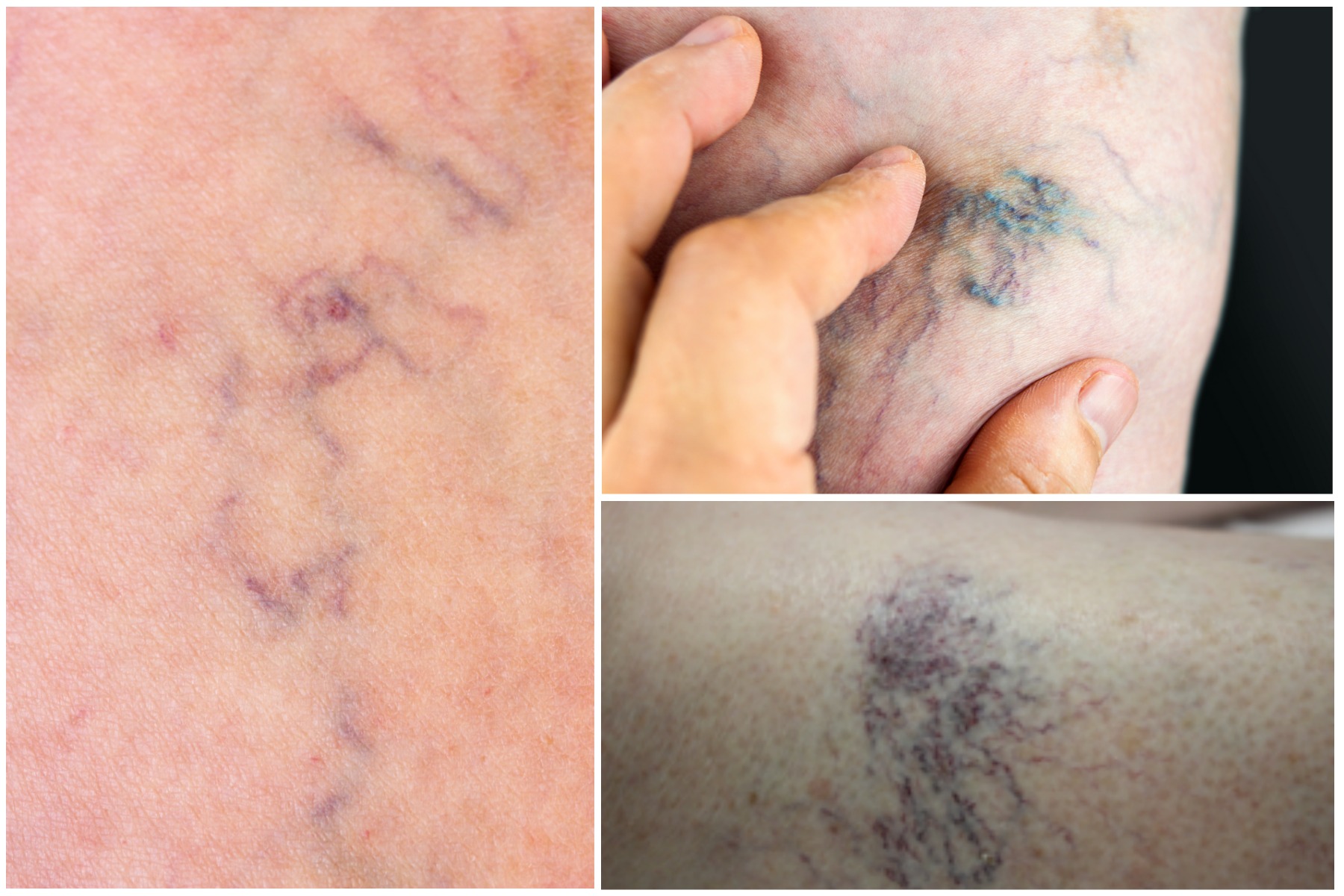Who is prone to spider veins?
Spider veins are common. A study in 2008 showed an incidence of 84% of general practice patients had spider veins (ref 1). Females had a slightly higher incidence. Advancing age, smoking and pregnancies also increase the risk.
As with other vein conditions, spider veins often have an underlying genetic cause, therefore they run in families.
Five top things to know about spider vein treatment
The best (gold standard) treatment for spider veins is surface sclerotherapy, also known as microschlerotherapy. This treatment involves a very fine needle being inserted into the vein injecting a schlerosant solution that closes down the vein from inside.
Surface sclerotherapy is a walk in – walk out procedure that takes 30 minutes.
At Geelong Veins, Skin and Laser we will individually assess your veins and give you an indication before you begin of how many sessions will be required. It will be between 1 and 5 sessions.
There is a medicare rebate that will cover part of the cost of surface schlerotherapy if you are eligible for medicare and have veins > 2.5mm in diameter.
Both legs and multiple areas can be treated in the one session.
MYTHS about spider vein treatment…
“They are not large varicose veins so don’t need to be treated”
We often see patients who have been turned away from their local GP or even a vascular surgeon being told their veins aren’t big so don’t bother with treatment. This is inaccurate advice, spider vein treatment is a simple procedure that provides good results. Patient satisfaction is high, with frequent comments of “I wish I had done this years ago”.
“It is purely a cosmetic problem”
Clusters of spider veins, particularly if around the ankles can cause medical conditions such as dermatitis and even skin ulceration. Spider veins can also cause aching and heaviness of the legs, or itching of the skin. Even if these medical problems do not occur, spider veins can hold people back from participating in exercise, swimming, or wearing comfortable clothing in the warmer months.
“I am too old to bother with treating my spider veins”
Patients in the over than 70 year old age group have a much higher rate of complications from abnormal veins including venous eczema and skin ulcers. This age group may or may not care about cosmetic appearance, but due to the higher incidence of complications would benefit most from treatment of abnormal veins.
“Vein stripping operations are the only available treatment and I don’t want surgery”
Over the past 30 years the management of vein disorders has advanced significantly. Vein stripping operations are now outdated with ultrasound guided deeper injections taking their place (performed by our vascular specialist). Surface / microschlerotherapy is a simple walk in – walk out procedure completed without the need for general anaesthetic, lasting around 30 minutes.
“Laser treatment must be better and less painful”
While we use lasers for treating a variety of conditions at GLCMC, surface schlerotherapy is still the best (“gold standard”) treatment for spider veins. Most clinics which offer laser treatment for spider veins do so as they are not medical clinics with doctors, so cannot offer surface schlerotherapy. We do use lasers for treating leg veins in a few particular situations – larger veins can be treated by the vascular specialist with an internal laser probe, and surface veins can be treated in breastfeeding or allergic patients with radiofrequency as these patients cannot safely have microschlerotherapy. Laser or radiofrequency treatment is also mildly painful.
“I shouldn’t bother getting my veins treated until I have finished all my pregnancies”
Treating spider or varicose veins prior to pregnancy or between pregnancies is recommended.
How to choose a practitioner to treat your spider veins.
At GLCMC we have been treating veins of all types since 1991. We have an on site vascular surgeon who treats larger varicose veins with ultrasound guided injections. As a GP my focus is on spider veins and surface veins, which is the main procedure I perform at GLCMC. As such I have completed in excess of 8000 hours of microschlerotherapy injections! Microschlerotherapy is certainly a skill that requires experience and regular practice to achieve the best result. Inserting the fine needles into very small veins is difficult, and accuracy rates are much better for practitioners who regularly perform this procedure. Seeing a doctor or nurse who only occasionally performs microschlerotherapy will give lesser results and lower patient satisfaction. Another factor in choosing a provider is that you can only receive a medicare rebate if a doctor performs the procedure. Some clinics offer laser or radiofrequency treatment of spider veins. We can also do this here for breastfeeding or allergic patients, but the results are inferior to the microschlerotherapy technique.
Reference 1: Telangiectasia in the Edinburgh Vein Study: Epidemiology and Association with Trunk Varices and Symptoms C.V. Buckley | C.J. Evans | P.L. Allan | A.J. Lee | F.G.R. Fowkes
